Black pasta with squid ink is a dish that feels like a secret shared with the ocean. It’s a rare find in regular grocery aisles, but the effort to make it at home is worth every minute. The ink adds a smoky, slightly bitter depth that’s both dramatic and comforting.
Why this dish keeps pulling me back.
Every time I make it, I’m reminded of seaside markets and the thrill of catching something rare. The ink’s smoky punch awakens my senses, and the simple act of tossing pasta into that dark sauce feels like a small rebellion. It’s a dish that feels both luxurious and comforting, perfect for when I need a little oceanic escape.
Breaking down the key ingredients.
- Black pasta (or regular pasta + squid ink): Gives the dish its signature look and a slight chew, the ink deepens the flavor.
- Squid ink: Adds a smoky, briny flavor that’s intensely oceanic, like a walk along the coast at dawn.
- Garlic: Fills the kitchen with a warm, pungent aroma; essential for depth.
- White wine: Brightens the ink’s richness and balances the smoky notes.
- Olive oil: The base of the sauce, glossy and fragrant—think green, grassy, with a hint of fruit.
- Pasta water: Starchy and salty, it helps loosen the sauce and cling to the noodles.
Tools of the trade for a perfect squid ink pasta.
- Large pot: Boil pasta evenly and efficiently.
- Wide skillet or frying pan: Create a deep, even space for ink sauce and pasta.
- Ladle or small cup: Measure and reserve pasta cooking water.
- Wooden spoon or spatula: Gently stir and combine ingredients without breaking the pasta.
The process of transforming simple pasta into an oceanic canvas.
Step 1: Bring a large pot of water to a rolling boil, add a generous pinch of salt, and cook the black pasta until just al dente, about 9-11 minutes.
Step 2: While pasta cooks, heat a wide skillet over medium heat, add olive oil, and sauté finely chopped garlic until fragrant, about 30 seconds.
Step 3: Add squid ink and a splash of white wine to the skillet; stir gently to combine and let it simmer for 2 minutes, releasing a smoky, briny aroma.
Step 4: Drain the pasta, reserving a cup of the cooking water, and toss it into the ink sauce. Cook together for 1 minute to meld flavors.
Cooking checkpoints and tips for perfect black pasta.
- Pasta should be just shy of fully cooked when added to the sauce; it will finish cooking in the pan.
- The ink sauce should be velvety, not gloopy or watery; adjust with reserved pasta water.
- Smell for a smoky, slightly briny aroma—if it’s faint, increase the heat slightly and stir longer.
- The pasta color will deepen as it absorbs the ink; avoid overcooking to keep the texture tender, not mushy.
Common mistakes and how to fix them.
- Overcooked pasta turns mushy, losing bite.? UNDERRIPENED PASTA? Cook a minute longer, taste a strand—should be tender but firm.
- Gritty or clumpy ink.? INK SAUCE CLUMPY? Stir constantly on low heat, add a splash of warm water to loosen.
- Too much alcohol or too high heat.? SPLASH OF WINE BURNS OFF? Reduce heat and add a splash of broth or water.
- Sauce is too thick or gloopy.? SAUCY? Add reserved pasta water a tablespoon at a time until velvety.
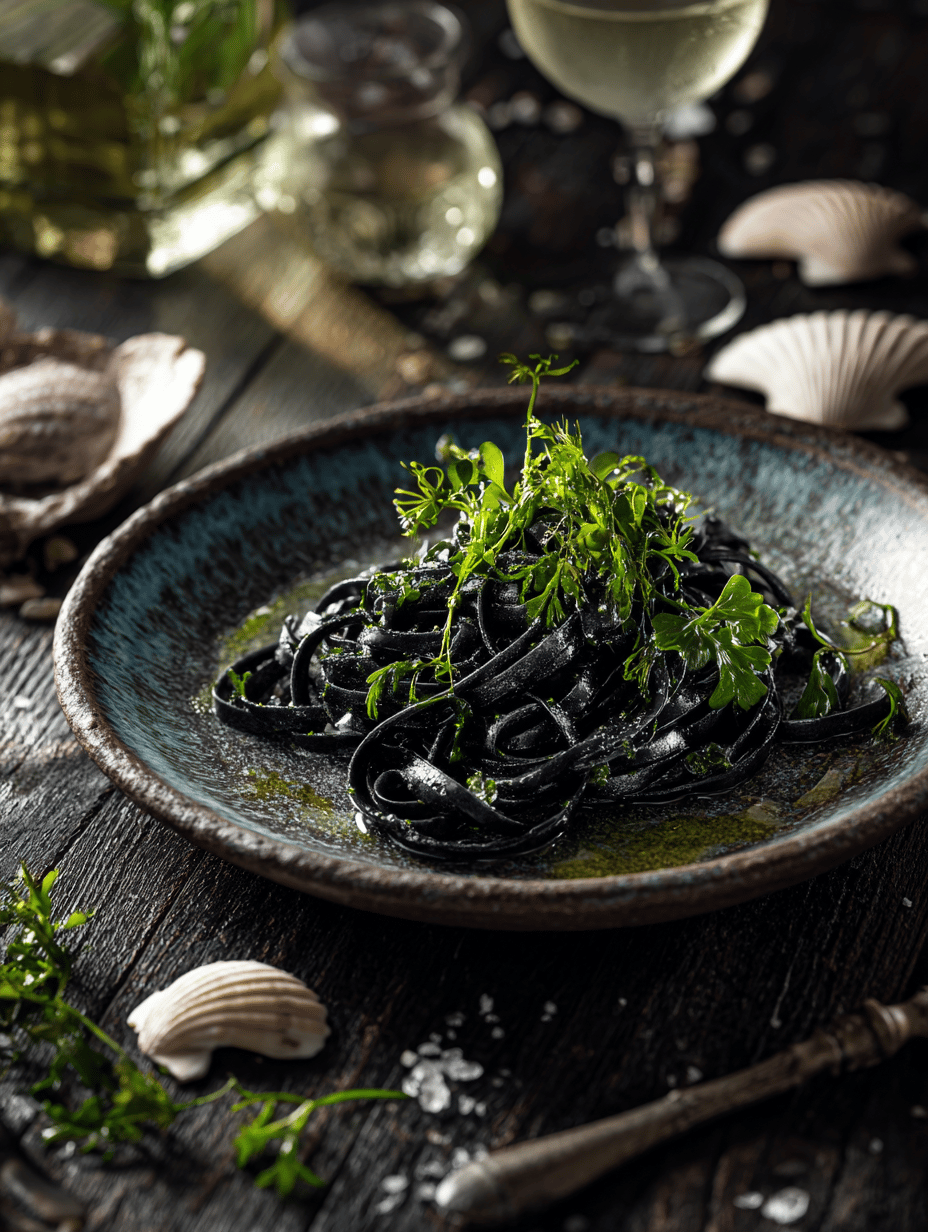
Black Pasta with Squid Ink
Ingredients
Equipment
Method
- Bring a large pot of salted water to a rolling boil and add the black pasta. Cook until just al dente, about 9-11 minutes, until it has a slight bite and a deep, glossy black color.
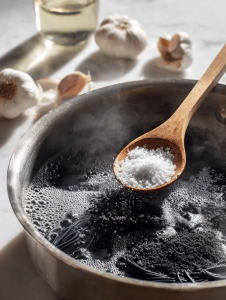
- While the pasta cooks, heat olive oil in a wide skillet over medium heat. Add finely chopped garlic and sauté for about 30 seconds, until fragrant and slightly golden, filling the kitchen with a warm aroma.
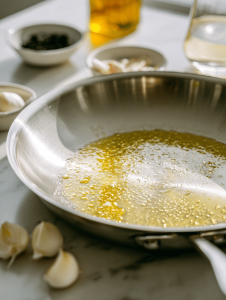
- Add squid ink and a splash of white wine to the skillet. Stir gently to combine, then let it simmer for about 2 minutes, watching the sauce turn velvety with an intense smoky, briny aroma filling the air.
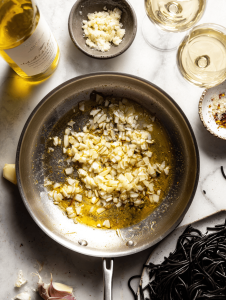
- Drain the pasta, reserving about a cup of the starchy cooking water. Add the drained pasta directly into the ink sauce in the skillet and toss gently to coat, allowing the color to deepen and flavors to meld, about 1 minute.
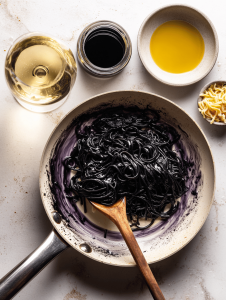
- If the sauce feels too thick or gloopy, add a little of the reserved pasta water, one tablespoon at a time, stirring constantly until it becomes silky and coats the pasta evenly.
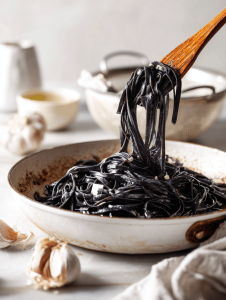
- Once coated and heated through, taste the pasta and adjust seasoning if needed. The sauce should be velvety, with a smoky oceanic flavor and glossy appearance, ready to serve immediately.
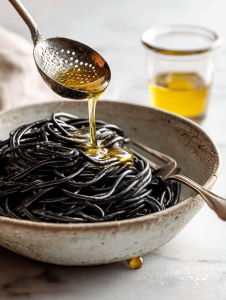
Leave a Reply